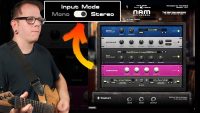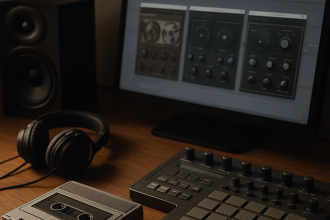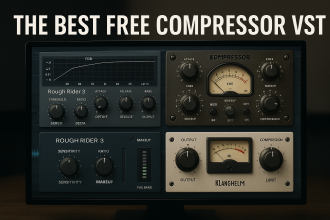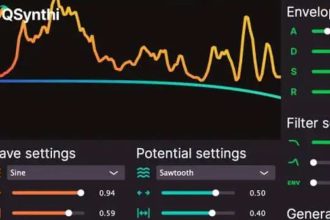In the world of virtual instruments, additive and subtractive synthesis are two pillars of sound design. Understanding their differences—and when to use each—can elevate your productions and help you pick the right VST for every sonic challenge.
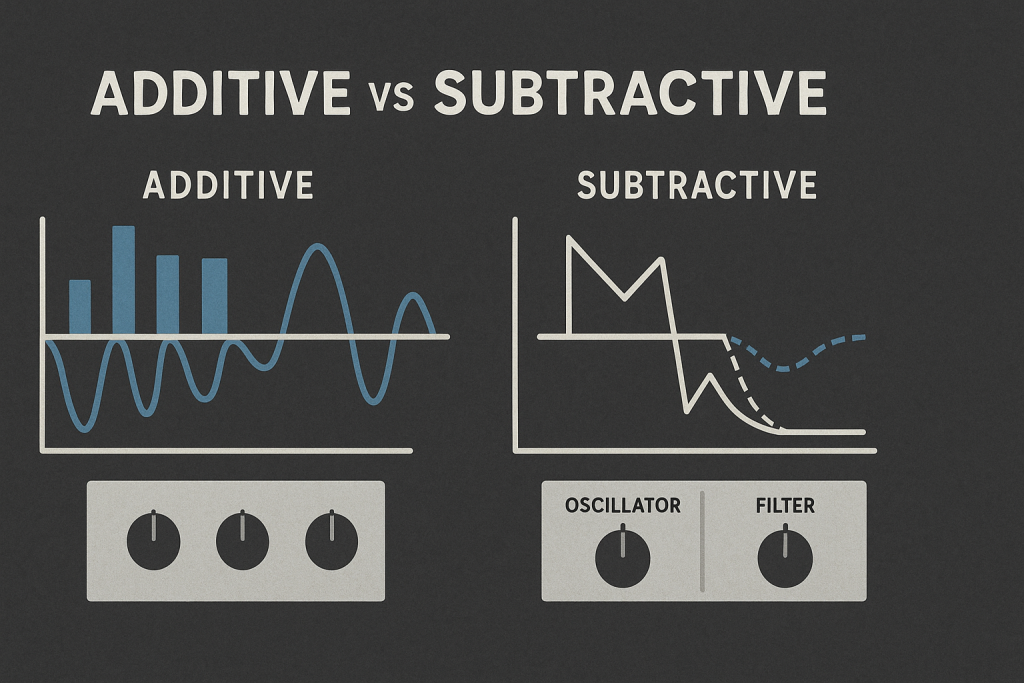
1. Understanding the Core Principles
Additive Synthesis: Building from Harmonics
Additive synthesis works by adding sine waves (called partials) to create complex tones. Each harmonic has its own amplitude, frequency, and envelope, allowing total control over the timbre. It’s like painting a sound pixel by pixel.
This precision makes additive synths ideal for evolving pads, textures, and organ-like tones—but they often require more CPU power and patience to master.
Subtractive Synthesis: Sculpting from a Full Spectrum
Subtractive synthesis starts with a harmonically rich waveform (saw, square, or noise) and subtracts frequencies using filters to sculpt the desired sound.
Think of it like sculpting marble—you start with too much material and remove what you don’t need. Subtractive synths are intuitive, quick, and perfect for leads, basses, and analog emulation.
2. Strengths, Weaknesses, and Typical Uses
| Method | Strengths | Weaknesses | Ideal For |
|---|---|---|---|
| Additive | Total harmonic control, evolving and organic textures | CPU heavy, complex interface | Pads, ambient textures, organs, soundscapes |
| Subtractive | Easy to use, warm analog tone, efficient | Limited harmonic precision | Leads, basslines, plucks, vintage synth sounds |
Both techniques are essential tools in modern production. Many hybrid synths now blend the two—allowing you to generate harmonics and sculpt them dynamically.
3. Best Additive and Subtractive VSTs (Free & Paid)
🧠 Additive Synths
- 🎹 ZynAddSubFX / Zyn-Fusion (Free)
A powerful hybrid synth that combines additive and subtractive engines with deep modulation options.
👉 Download ZynAddSubFX - 🎛️ RE4ORM by 2getheraudio (Paid, with Free Demo)
Offers real-time additive waveform editing and modulation. Perfect for motion-based electronic textures.
👉 Get RE4ORM - 🌈 Colours by TeMuFra (Free)
A modern free additive synthesizer with 8 voices and full spectral editing capabilities.
👉 Download Colours - 💫 Vital by Matt Tytel (Free / Paid Upgrade)
A hybrid synth with advanced spectral morphing and partial control.
👉 Download Vital - 🔮 Morphine by Image-Line (Paid)
A legendary additive synth used for realistic and futuristic sound textures.
👉 Buy Morphine
🔊 Subtractive Synths
- 🚀 Surge XT (Free)
A professional-grade subtractive and hybrid synth with filters, modulation, and MPE support.
👉 Download Surge XT - 🎛️ Synth1 (Free)
A timeless classic inspired by the Nord Lead 2. Lightweight and packed with thousands of presets.
👉 Download Synth1 - 💥 Serum by Xfer Records (Paid)
A standard in electronic production—though wavetable-based, its subtractive filters make it extremely versatile.
👉 Buy Serum - 🎨 Pigments by Arturia (Paid)
Combines subtractive, additive, wavetable, and granular synthesis in one elegant interface.
👉 Get Pigments - 🔥 ANA 2.5 by Sonic Academy (Paid)
A multi-engine synth capable of rich analog subtractive tones with modern digital precision.
👉 Buy ANA 2.5
4. Additive & Subtractive Expansion Packs
Many developers provide preset packs and expansions for their synths to help you start designing quickly:
- Vital Preset Packs – Free and paid expansions with evolving pads, basses, and cinematic textures.
👉 Browse Vital Packs - Serum Expansion Packs – Countless sound banks available for EDM, House, and Cinematic scoring.
👉 Explore Serum Presets - Arturia Pigments Sound Banks – Professionally designed packs that explore both additive and subtractive soundscapes.
👉 Shop Pigments Banks - RE4ORM Expansions – Motion-based patches and morphing textures ideal for ambient and film scoring.
👉 View RE4ORM Expansions
5. When to Use Each Type
- Choose additive synthesis when you need evolving tones, harmonic complexity, and organic sound movement.
- Choose subtractive synthesis when you want fast, classic synth sounds, analog warmth, and straightforward workflow.
- Or better yet—pick a hybrid synth and combine both.
Modern producers often layer the two approaches: a subtractive bass under an additive pad, or an additive shimmer on top of a filtered lead. It’s this mix that gives today’s electronic tracks their depth and texture.
6. Final Thoughts
Whether you prefer the precision of additive synthesis or the raw punch of subtractive design, understanding both will give you the freedom to shape sound like never before.
Experiment, layer, and modulate—because true creativity starts when you stop asking which method is better and start asking what sound do I want to create today?
![]()












